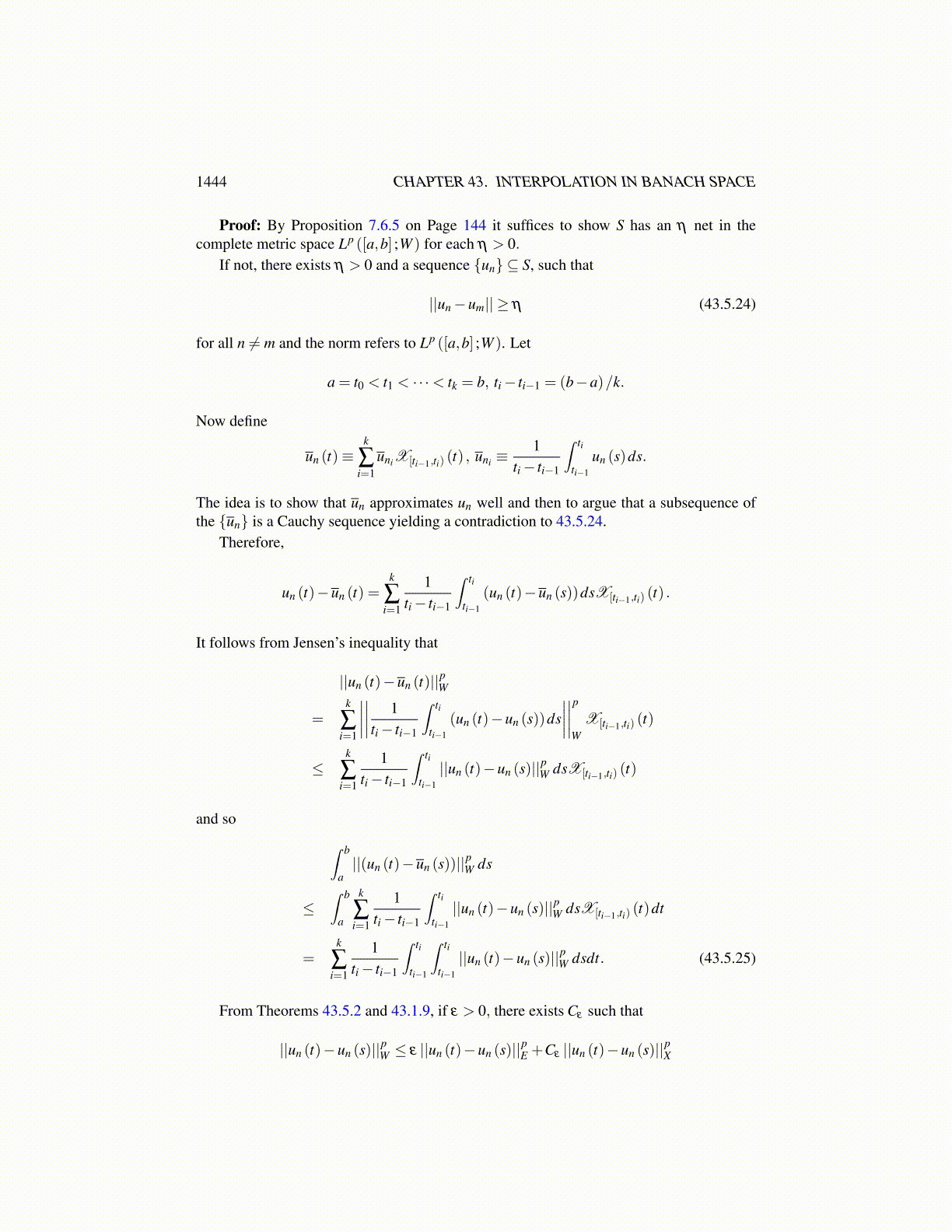
1444 CHAPTER 43. INTERPOLATION IN BANACH SPACE
Proof: First consider the issue of S being a subset of C ([a,b] ;W ) . By Theorem 43.1.9on Page 1416 the following holds in X for u ∈ S.
u(t)−u(s) =∫ t
su′ (r)dr.
Thus S⊆C ([a,b] ;X) . Let ε > 0 be given. Then by Theorem 43.5.2 there exists a constant,Cε such that for all u ∈W
||u||W ≤ε
4R||u||E +Cε ||u||X .
Therefore, for all u ∈ S,
||u(t)−u(s)||W ≤ ε
6R||u(t)−u(s)||E +Cε ||u(t)−u(s)||X
≤ ε
3+Cε
∣∣∣∣∣∣∣∣∫ t
su′ (r)dr
∣∣∣∣∣∣∣∣X
≤ ε
3+Cε
∫ t
s
∣∣∣∣u′ (r)∣∣∣∣X dr ≤ ε
3+Cε R |t− s|1/q . (43.5.22)
Since ε is arbitrary, it follows u ∈C ([a,b] ;W ).Let D = Q∩ [a,b] so D is a countable dense subset of [a,b]. Let D = {tn}∞
n=1. Bycompactness of the embedding of E into W, there exists a subsequence u(n,1) such thatas n→ ∞, u(n,1) (t1) converges to a point in W. Now take a subsequence of this, called(n,2) such that as n→ ∞,u(n,2) (t2) converges to a point in W. It follows that u(n,2) (t1) alsoconverges to a point of W. Continue this way. Now consider the diagonal sequence, uk ≡u(k,k) This sequence is a subsequence of u(n,l) whenever k > l. Therefore, uk (t j) convergesfor all t j ∈ D.
Claim: Let {uk} be as just defined, converging at every point of D ≡ Q∩ [a,b] . Then{uk} converges at every point of [a,b].
Proof of claim: Let ε > 0 be given. Let t ∈ [a,b] . Pick tm ∈ D∩ [a,b] such that in43.5.22 Cε R |t− tm|< ε/3. Then there exists N such that if l,n > N, then
||ul (tm)−un (tm)||X < ε/3.
It follows that for l,n > N,
||ul (t)−un (t)||X ≤ ||ul (t)−ul (tm)||+ ||ul (tm)−un (tm)||+ ||un (tm)−un (t)||
≤ 2ε
3+
ε
3+
2ε
3< 2ε
Since ε was arbitrary, this shows {uk (t)}∞
k=1 is a Cauchy sequence. Since W is complete,this shows this sequence converges.
Now for t ∈ [a,b] , it was just shown that if ε > 0 there exists Nt such that if n,m > Nt ,then
||un (t)−um (t)||< ε
3.